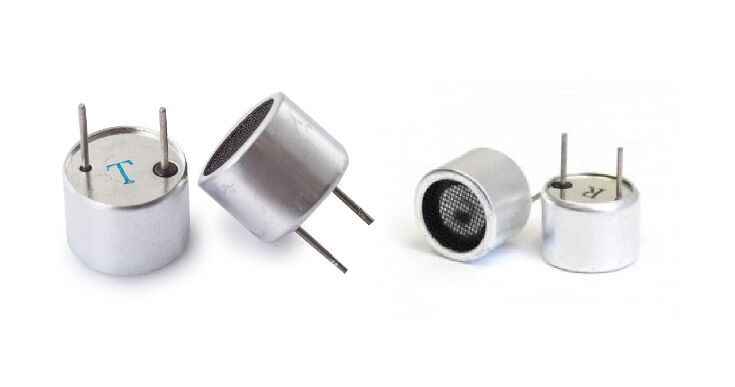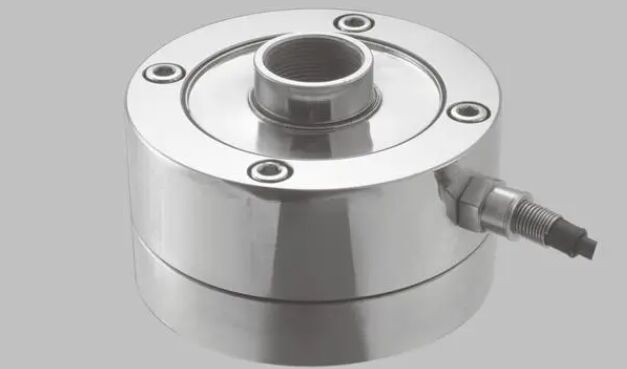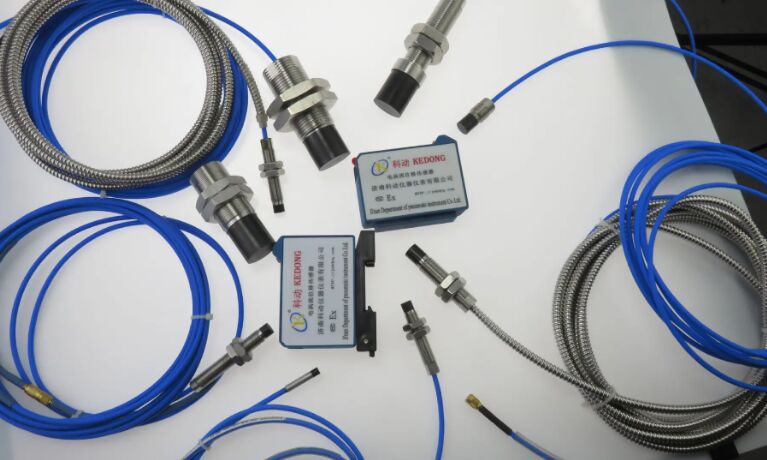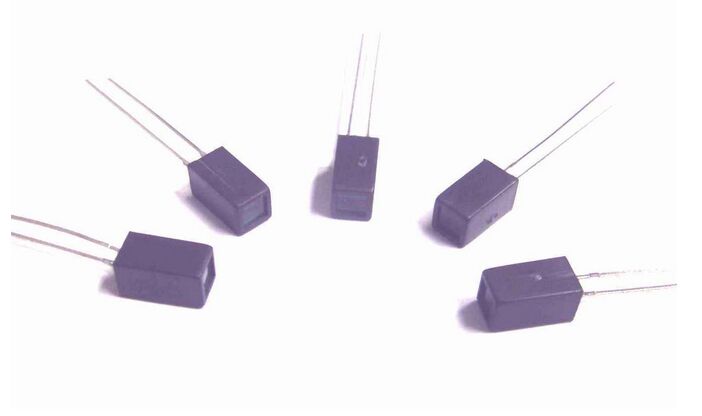By Omron Automation and Safety 653
A sensor is a detection device, a device used to detect events or changes in the environment and send this message to other electronic devices, usually consisting of a sensing device and a conversion device. The national standard defines a sensor as a device or device that can sense a specified measured value and convert it into a usable signal according to certain rules, usually consisting of a sensitive element and a conversion element.sensors and materials

The sensor is generally composed of four parts: sensitive element, conversion element, conversion circuit and auxiliary power supply. The sensitive element directly senses the measured object, and outputs a physical quantity signal that has a definite relationship with the measured object. The conversion element converts the physical quantity signal output by the sensitive element into an electrical signal. The conversion circuit is responsible for amplifying and modulating the electrical signal output by the conversion element. Conversion elements and conversion circuits generally also need auxiliary power supply.
The effect of a sensor's input on the output is called the sensor coefficient or sensitivity. For example, for a mercury thermometer, when the temperature rises by 1 °C, the mercury column rises by 1 cm, then the sensing coefficient of this mercury thermometer is 1 cm/°C.
A sensor is a physical device or biological organ that can detect and sense external signals, physical conditions (such as light, heat, humidity) or chemical composition (such as smoke), and transmit the detected information to other devices. The role of the sensor is to convert one kind of energy into another energy form, so many people also use "Transducer" to call "Sensor".
Ⅰ. The main function of the sensor
In order to obtain information from the outside world, people must rely on sensory organs. However, relying on people's own sensory organs alone is far from enough for their functions in the study of natural phenomena and laws and production activities. To accommodate this situation, sensors are needed. Therefore, it can be said that the sensor is an extension of human facial features, also known as electrical facial features.
Sensors play a vital role in nearly every industry and are ubiquitous due to their diverse technologies, sense of characteristics, and wide range of applications.
The capability of a sensor is to measure many kinds of data about the activities happening within the system, and the choice of sensor requires knowing the variables we want to measure, as well as the specifications of our sensors. For a specific application, several factors must be considered: For selecting the type of output required, possible sensors need to be selected in terms of spacing, accuracy, linearity, speed of response, reliability, maintenance feasibility, availability and cost, which are the key factors for selecting the desired output. Some basic considerations for the sensors used, and a list of available, desired, and possible variables are critical.
A sensor device is an input device that does some processing and generates output. Another meaning of a sensor device: it is a device that converts a signal from an energy source to the electrical domain. Sensors are used in industries such as automotive, manufacturing, aerospace, medical, telecommunications, chemical and computer hardware.
The sensor can detect the characteristics of the target object, such as temperature, pressure, humidity, weight, speed, etc., and realize the detection and monitoring of the internal and external environment of the object by converting these physical quantities into electrical signals or other forms of signals.
Sensors can monitor various physical quantities in large equipment or systems in real time, such as the status of automobile engines, the operating status of power transmission and distribution systems, etc. By monitoring these physical quantities, possible failures can be prevented and equipment or systems can be guaranteed. normal operation.
The sensor can feed back the detected signal to the control system, and realize the adjustment and control of physical quantities through the control system, such as automatic control of lights, air conditioners, motors and other equipment, to achieve more intelligent and convenient control.
Sensors can accurately measure physical quantities inside or outside objects, such as temperature changes, liquid flow, light intensity, etc. By converting the changing physical quantities into electrical signals or other forms of signals, they can be accurately measured in real time.

Ⅱ. Classification of sensors
1. Classified by working principle
Microwave sensor: It is a device that uses microwave radiation for measurement and detection. They use properties of microwaves such as reflection, scattering, absorption and transmission to sense and detect the presence, position and motion of objects. The working principle of the microwave sensor is to judge the existence, position and movement of the target object by sending microwave signals and according to the characteristics of the returned signals. When microwave signals encounter objects, they may be reflected, scattered or absorbed. Microwave sensors receive the returned signal and analyze its characteristics to infer the properties of the target object.
Capacitive sensor: It is a device that measures and detects the principle of capacitance change. It uses the capacitance change between the object and the sensor to sense and measure the properties of the object, such as distance, position, shape, humidity, etc. The working principle of capacitive sensors is based on the relationship between the capacitance value between two electrodes and the distance between them. As the target object approaches or moves away from the sensing electrode, the capacitance value changes because the presence of the target object changes the distribution of the electric field. By measuring the change in capacitance, the properties of the target object can be deduced.Capacitive Touch Sensors
Resistive sensor: It is a device that measures and detects based on the principle of resistance change. The operating principle of resistive sensors is based on the relationship between the resistance value of the sensing element and the properties of the target object. When the properties of the target object change, the resistance value of the sensing element also changes. Resistive sensors are widely used in many fields, including temperature measurement, pressure measurement, humidity measurement, light sensing, etc.
Inductive sensor: It is a device that measures and detects the principle of inductance change. The working principle of inductive sensors is based on the relationship between the inductance value of the sensing element and the properties of the target object. When a target object approaches or moves away from the sensing element, its inductance value changes because the presence of the target object affects the electromagnetic field distribution around the sensing element.
Electrochemical sensor: It is a sensor that uses electrochemical reactions to sense and measure chemical properties such as chemical substance concentration, redox ability, and pH value. They obtain information about the chemical species of interest by measuring the current, potential, or charge generated by an electrochemical reaction. The operating principle of electrochemical sensors is based on electrochemical reactions. When the chemical of interest comes into contact with the working electrode, the electrochemical reaction between them produces a current or potential change.
Isotope sensor: It is a device used to measure and detect isotope content and isotope ratio. Isotopes are different forms of the same element whose nuclei have the same atomic number but different mass numbers. Isotope sensors can analyze the relative abundance of different isotopes in a sample and are used in a variety of applications, including environmental monitoring, geological research, the nuclear energy industry, and more. The working principle of isotope sensors is based on the properties of isotopes and the corresponding radiation. Different isotopes have different nuclear stability and radioactive characteristics, and the content and ratio of isotopes can be determined by measuring their radioactive decay or other physical properties.
Photoelectric sensor: A photoelectric sensor is a device that uses the photoelectric effect for measurement and detection. It uses the properties of light, including photoelectric conversion, reflection, scattering and absorption, etc. to perceive and measure the properties of objects, such as distance, position, shape, color, etc. The working principle of photoelectric sensors is based on the interaction and photoelectric conversion of light. When light rays hit a target object, they may be reflected, scattered or absorbed by the object. Photoelectric sensors infer the properties of target objects by measuring changes in light, such as light intensity, light scattering, or the time difference between light reflections.Optical Sensors

Piezoelectric sensor: It is a device that uses the piezoelectric effect for measurement and detection. It senses and measures physical quantities such as pressure, force, or vibration by measuring the charge or voltage change generated by piezoelectric materials. The working principle of piezoelectric sensors is based on the piezoelectric effect, which means that a piezoelectric material produces a change in charge or potential when it is subjected to pressure or strain. When pressure is applied to the piezoelectric sensor, the piezoelectric material produces a charge separation, or change in potential. By measuring the change in charge or voltage, the amount of pressure or force applied to the sensor can be deduced.
2. Classified by Application
Load Cell: A load cell is a sensor used to measure the mass or weight of an object. The measurement of weight can be achieved by different physical principles and techniques. Common load cells include resistance strain sensors, electromagnetic induction sensors, pressure sensors, and load filament sensors.
Pressure sensor: is a sensor used to measure pressure. It acts pressure on the sensing element, and converts the pressure into a corresponding electrical signal output, so as to realize the measurement and monitoring of the pressure. Pressure sensors can be divided into capacitive sensors, piezoelectric sensors, piezoresistive sensors, and volumetric sensors.
Humidity sensor: is a sensor used to measure the humidity moisture content in the environment. They are used to detect and monitor humidity moisture levels in air or other gases. Humidity sensors are divided into conductive humidity sensors, capacitive humidity sensors, surface tension humidity sensors and resistive humidity sensors. Humidity sensors are used in many fields, including indoor environmental monitoring, weather observation, agriculture, food processing, medical equipment, and HVAC systems, among others.
Temperature sensor: It is a sensor used to measure the temperature of the environment or objects. They can convert temperature information into corresponding electrical signals to realize temperature measurement and monitoring. Temperature sensors are widely used in many fields, including industrial automation, medical equipment, electronics, weather observation, thermal management systems, etc.
pH sensor: is a sensor used to measure the acidity or alkalinity (pH value) of a solution. They determine the acidity or alkalinity of a solution by sensing and measuring the concentration of hydrogen ions in the solution. The pH sensor consists of electrode joints and connecting wires, pH sensitive electrodes, ion selective membranes and reference electrodes.
Displacement sensor: It is a sensor used to measure the position, displacement or movement of an object. They can convert the displacement of objects into corresponding electrical signal output to realize displacement measurement and monitoring. Displacement sensors can be divided into piezoelectric displacement sensors, resistive displacement sensors, volumetric displacement sensors and optical displacement sensors.
Acceleration sensor: It is a sensor used to measure the acceleration of an object. They can sense the acceleration of an object in three axes and convert it into a corresponding electrical signal output. Acceleration sensors can be divided into magnetoresistive acceleration sensors, inertial acceleration sensors and MEMS acceleration sensors.
Flow Sensor: is a device used to measure the flow rate or volume of a liquid or gas. They are used in a wide variety of industrial and commercial applications to monitor, control and record the flow of fluids. Common types of flow sensors include thermal sensors, magnetic flow sensors, mass flow sensors, ultrasonic flow sensors, and turbine flow sensors.
Liquid level sensor: A liquid level sensor is a sensor used to measure the liquid level of liquid or solid materials. They can sense the interface position between the liquid or material and the sensor, and convert the liquid level height into a corresponding electrical signal output. Liquid level sensors are usually divided into various types according to different measurement principles and sensing elements: pull rope liquid level sensors, float liquid level sensors, capacitive liquid level sensors, pressure liquid level sensors, ultrasonic liquid level sensors and capacitive liquid level sensors liquid level sensor.
Differential pressure transmitter: is a sensor device used to measure the difference in pressure in a fluid or gas. They can convert differential pressure into corresponding electrical signal output to realize differential pressure measurement and monitoring. The differential pressure transmitter consists of a junction box and connecting wires, a pressure sensor, and a transmitter circuit. The operating principle of differential pressure transmitters is based on pressure differences in fluids or gases. When fluid or gas passes through the differential pressure transmitter, the pressure sensor senses the pressure difference on both sides of the fluid and converts it into a corresponding electrical signal output. By measuring the change of the electrical signal, the differential pressure value of the fluid or gas can be calculated.
Illuminance Sensor: An illuminance sensor is a type of sensor used to measure the intensity of light, or lighting level. They can sense the light level in the environment and convert it into a corresponding electrical signal output to realize the measurement and monitoring of illuminance. Illuminance sensors are usually divided into photoresistive sensors, photodiode sensors, photodiode sensors, and photoconductive sensors according to different measurement principles and sensing elements. Illuminance sensors are widely used in many fields, including indoor lighting control, outdoor light monitoring, building automation, environmental monitoring, photography and optical equipment, etc.
3. Classified by technology
UV sensor: A sensor used to detect and measure the intensity of ultraviolet radiation in the environment. They can sense the presence of ultraviolet light and convert it into a corresponding electrical signal output to realize the monitoring and quantitative analysis of ultraviolet light. Ultraviolet sensors can be divided into ultraviolet photoconductive sensors, ultraviolet photoresistive sensors, ultraviolet photoconductive sensors, and ultraviolet photodiode sensors.
Pressure sensor: It is a sensor used to measure the pressure of an object or medium. They can convert pressure into corresponding electrical signal output to realize pressure measurement and monitoring. Pressure sensors can be divided into magnetic sensitive sensors, piezoresistive sensors, capacitive pressure sensors, and piezoelectric sensors.
Magnetic sensor: It is a sensor that uses the principle of magnetic field induction to detect and measure the strength of a magnetic field. They can sense the existence of the surrounding magnetic field and convert it into a corresponding electrical signal output to realize the measurement and monitoring of the magnetic field. Magnetic sensors can be divided into magnetoresistive sensors, magnetic induction Hall sensors, magnetic induction sensors, and magnetoelectric sensors.
Image Sensor: An image sensor is a device that captures an optical image and converts it into an electrical signal. They are widely used in digital cameras, mobile phone cameras, security monitoring systems, medical imaging equipment, machine vision, and autonomous driving. The development of image sensors has continuously promoted the progress of digital image technology and provided a wider application space in various fields.
Power sensor: It is a sensor used to measure the amount of charge or electricity. They can sense the amount of charge passing through the circuit and convert it into a corresponding electrical signal output to measure and monitor the amount of electricity. Power sensors can be divided into magnetic sensors, capacitive sensors, and resistive sensors.
4. Electronic sensor
Hall effect sensor: It is a sensor based on the principle of Hall effect, which is used to detect the presence of a magnetic field and measure the strength of the magnetic field. They use the Hall voltage generated by the Hall element (Hall crystal) in the material to realize the detection and measurement of the magnetic field. The Hall effect means that when a current passes through certain materials, it is affected by a magnetic field perpendicular to the direction of the current, and a potential difference will be generated in the material, that is, the Hall voltage. Hall effect sensors use the change in the Hall voltage in the Hall element to infer the presence and strength of a magnetic field. Common Hall effect sensor materials are silicon, GaAs and GaN. These materials generate different Hall voltages when subjected to a magnetic field, so the appropriate material can be selected according to the application requirements.
Bendable sensor: is a sensor used to measure the bending or deformation of an object. They can sense the deformation or curvature of an object and convert it into a corresponding electrical signal output to achieve measurement and monitoring of the deformation or curvature. Bendable sensors are divided into capacitive sensors, resistive sensors and optical sensors. Bendable sensors are widely used in many fields, including robotics, health monitoring, medical equipment, virtual reality, smart electronic devices, etc.
Collision sensor: is a sensor used to detect collision or impact of an object. They can sense the change of force or pressure between the object and the sensor, and convert it into a corresponding electrical signal output. Collision sensors are divided into acceleration sensors, piezoelectric sensors and spring sensors. Crash sensors are used in many fields, including automotive safety systems, robotics, game controllers, security systems, and more. They help detect and identify collision events and trigger appropriate actions or alarms to protect equipment, people or objects.
5. Classification by principle
Humidity sensor: is a sensor used to measure and monitor the humidity level in the environment. The humidity sensor can sense the humidity in the air and convert it into a corresponding electrical signal output. Humidity sensors can be divided into surface acoustic wave sensors, resistive sensors, and capacitive sensors.
Vibration sensor: is a sensor used to detect and measure the vibration or vibration of an object. They can sense the vibration frequency, amplitude and direction of an object, and convert it into a corresponding electrical signal output to achieve vibration monitoring and analysis. Vibration sensors can be divided into Latin disk sensors, acceleration sensors, and piezoelectric sensors.
Magnetic sensor: is a sensor used to detect and measure the presence and strength of a magnetic field. They can sense changes in the surrounding magnetic field and convert it into a corresponding electrical signal output. Magnetic sensors can be divided into three types, including magnetoresistive sensors, magnetoelectric sensors and magnetic induction sensors.
6. Classified by output signal
Pseudo-digital sensor: Convert the measured signal quantity into a frequency signal or a short-period signal output (including direct or indirect conversion).
7. Classified according to its composition
Application sensors: are sensors that are specifically designed to meet the needs of a specific application. These sensors are optimized in design and functionality for specific application areas to provide accurate and reliable measurement and detection capabilities. It is a sensor composed of a basic sensor or a combination sensor combined with other mechanisms.
Combined sensor: a sensor composed of a combination of different single conversion devices.
Basic sensor: It is the most basic single conversion device. Basic sensors can be used alone or combined with other sensors or devices to meet specific measurement and monitoring needs.

Ⅲ.Characteristics of sensor
1. Sensor Dynamics
The so-called dynamic characteristics refer to the characteristics of the output of the sensor when the input changes. In actual work, the dynamic characteristics of a sensor are often expressed by its response to some standard input signals. This is because the response of the sensor to the standard input signal is easy to obtain experimentally, and there is a certain relationship between its response to the standard input signal and its response to any input signal, and the latter can often be inferred by knowing the former.
2. Sensor static
The static characteristic of the sensor refers to the relationship between the output quantity and the input quantity of the sensor for the static input signal. Because the input quantity and output quantity have nothing to do with time at this time, the relationship between them, that is, the static characteristics of the sensor can be used as an algebraic equation without time variable, or the input quantity is used as the abscissa, and the corresponding output quantity is used as The characteristic curve drawn on the ordinate is used to describe. The main parameters that characterize the static characteristics of the sensor are: linearity, sensitivity, hysteresis, repeatability, drift, etc.
Linearity: refers to the degree to which the actual relationship curve between the sensor output and the input deviates from the fitting straight line. It is defined as the ratio of the maximum deviation between the actual characteristic curve and the fitting straight line to the full-scale output value within the full-scale range.
Repeatability: Repeatability refers to the degree of inconsistency of the characteristic curve obtained when the input quantity of the sensor is continuously changed multiple times in the same direction in the full range.
Ⅳ.Structure of sensor
1. Sensing Element: The sensing element is the core component of the sensor, which is responsible for interacting with the external environment or physical quantities, and converting this effect into a measurable electrical signal. Sensing elements can use various technologies and principles, such as resistance, capacitance, voltage, current, pressure, temperature, etc.
2.Interface Circuit: The interface circuit is used to connect and interact the converted signal with external devices or systems. It can include cables, connectors, communication interfaces, etc., in order to transmit the output of the sensor to other equipment or receive control signals from other equipment.
3. Enclosure and Protection: Sensors usually include a housing or protective layer to protect internal circuits and components from interference, contamination, or mechanical damage from the external environment. The housing can also provide mechanical support and a location to secure the sensor.
4.Signal Converter: The signal converter is responsible for converting the original signal output by the sensing element into an electrical signal that can be read or processed. This usually involves the process of signal amplification, filtering, linearization and conversion to standard signals such as voltage, current or digital signals.
5.Power Supply Circuit: The power supply circuit provides the required power supply for the sensor. This can be a battery, a DC power supply, an AC power supply, etc., depending on the requirements of the sensor and the application scenario.

Frequently Asked Questions
1. What is the range of physical quantities that the sensor can measure?
The range of physical quantities that a sensor can measure depends on the specific sensor type and design. Different types of sensors are specially designed to measure different physical quantities and therefore have different measurement ranges. Common measurement ranges include temperature, acceleration, pressure, light, and humidity.
2. What are the new technologies and trends in the field of sensors?
With the development of the Internet of Things, the application and number of sensors are increasing exponentially. The connection of sensors to the Internet provides greater opportunities for real-time data collection, remote monitoring and intelligent control. IoT technology combines sensors with cloud computing, big data analysis and artificial intelligence to provide more intelligent and automated solutions for various industries and fields.
The development of micro-nano technology makes sensors smaller and more precise. Micro-nano-fabrication technology can manufacture sensor elements on a micro scale, improving the sensitivity, response speed and power consumption efficiency of sensors. The development of this technology also provides greater flexibility and room for innovation in the design and manufacture of new sensors.
Environmental awareness technology monitors and collects data of environmental parameters in real time by deploying sensor networks. These sensors can realize large-scale and multi-point environmental monitoring, thereby providing accurate data support for meteorology, air quality, traffic and urban planning.